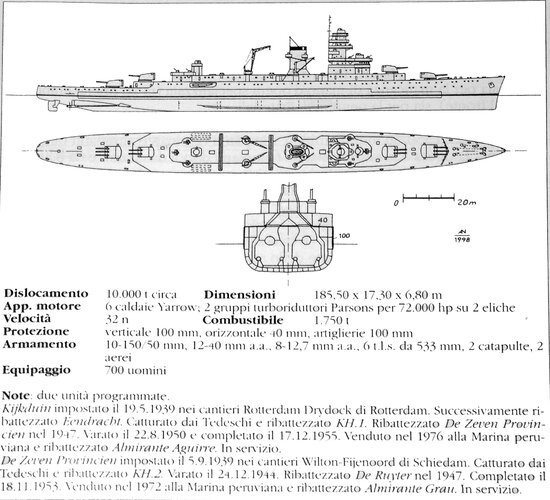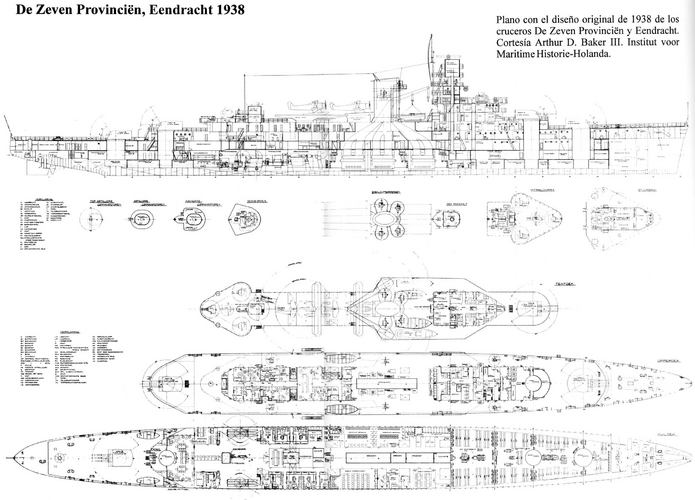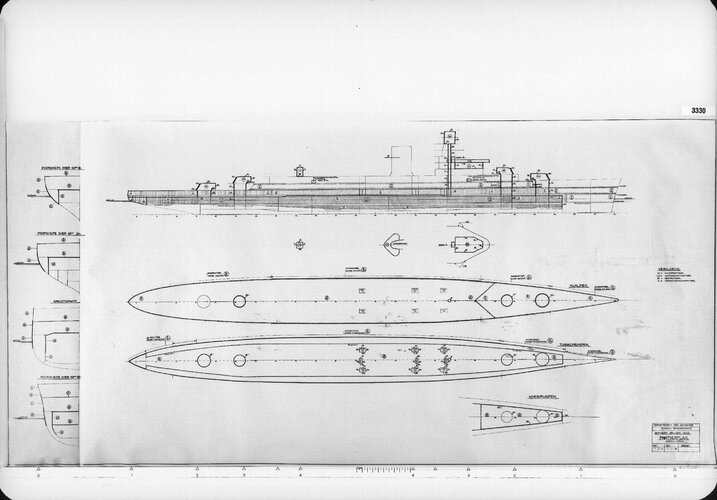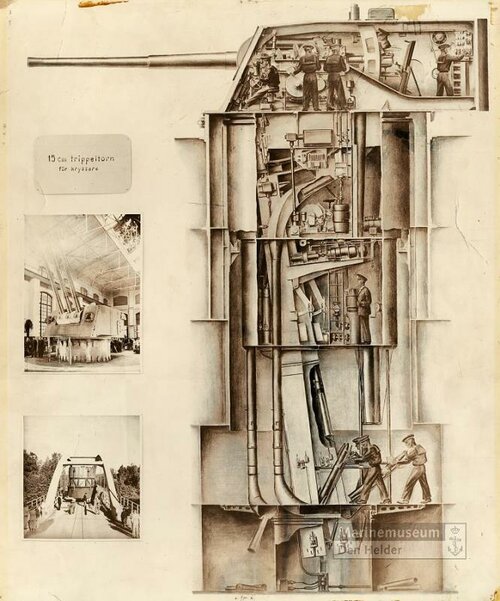YourChair
ACCESS: Restricted
- Joined
- 24 October 2021
- Messages
- 38
- Reaction score
- 69
Does anyone have:
- general plans and armor scheme of the Eendrachts. For the armor, the correct figures seems to be 100mm belt of unknown height and length closed by 60mm traverses at the end barbettes, with 75mm armor extending beyond the citadel on the sides for an unknown distance, topped by a 25mm deck. I read that: "The armor was supplied by the German company Krupp AG , the French Marrel Freres and the English Colvilles Ltd." Assumedly the side armor is of German manufacture, but I'm not sure if this would be the more traditional KC armor (as used in the Ks and Leipzig) or Nurnberg's Wotan Härte. And I'm not sure where the French and British steel was to come in
- information on the ship's armament, mostly in terms of the parameters of the main battery (the 152/53 Bofors gun, eventually named the M42), but also including what torpedoes were to be used
- I remember hearing (forgot where) about a plan to adopt a medium-caliber secondary battery for the Eendrachts, at the cost of dropping the torpedoes if need be. Does anyone know more?
- Definitive information on the KH1/KH2 designs after capture by the Germans -- I've seen both 4x3 150/55 C/28 and 4x2 150/55 C/28 (to be taken from the M-class cruisers), for example
- information on what the relative strengths and weaknesses of the Eendracht design were? I would assume that the fire control and light AA were above average, but 25mm deck armor seems very inadequate, and the ship's general parameters don't seem very impressive compared to an Abruzzi, Fiji, or even a 2x3 2x2 Amphion.
Any other information would also be appreciated!
- general plans and armor scheme of the Eendrachts. For the armor, the correct figures seems to be 100mm belt of unknown height and length closed by 60mm traverses at the end barbettes, with 75mm armor extending beyond the citadel on the sides for an unknown distance, topped by a 25mm deck. I read that: "The armor was supplied by the German company Krupp AG , the French Marrel Freres and the English Colvilles Ltd." Assumedly the side armor is of German manufacture, but I'm not sure if this would be the more traditional KC armor (as used in the Ks and Leipzig) or Nurnberg's Wotan Härte. And I'm not sure where the French and British steel was to come in
- information on the ship's armament, mostly in terms of the parameters of the main battery (the 152/53 Bofors gun, eventually named the M42), but also including what torpedoes were to be used
- I remember hearing (forgot where) about a plan to adopt a medium-caliber secondary battery for the Eendrachts, at the cost of dropping the torpedoes if need be. Does anyone know more?
- Definitive information on the KH1/KH2 designs after capture by the Germans -- I've seen both 4x3 150/55 C/28 and 4x2 150/55 C/28 (to be taken from the M-class cruisers), for example
- information on what the relative strengths and weaknesses of the Eendracht design were? I would assume that the fire control and light AA were above average, but 25mm deck armor seems very inadequate, and the ship's general parameters don't seem very impressive compared to an Abruzzi, Fiji, or even a 2x3 2x2 Amphion.
Any other information would also be appreciated!




